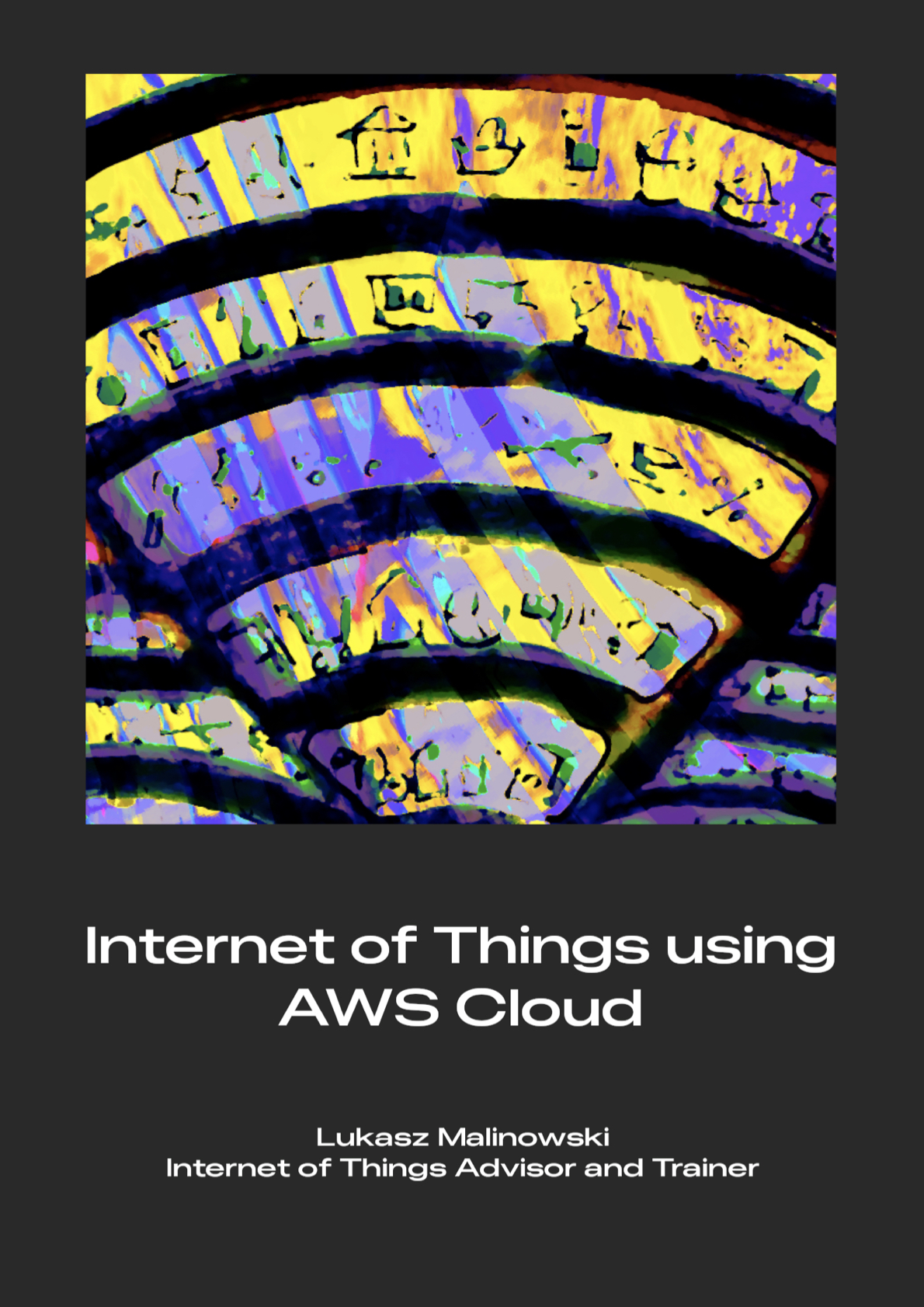Internet of Things using AWS Cloud
Would you like to understand how to securely connect devices to the AWS Cloud and effectively manage your IoT fleet? This book provides an introduction to the Internet of Things domain, covering various aspects of connectivity and device management using AWS Cloud.
Key Features
- Technical foundations of the Internet of Things explained and reinforced with sample implementations.
- Uncovered the reasoning behind best practices tested in real-life commercial deployments.
- Hands-on exercises using an interactive IoT Lab environment.
Free Sample
Internet of Things using AWS Cloud (sample)
Book Description

The Internet of Things (IoT) is not a “single thing” but a blend of multiple technologies and concepts like networking, cybersecurity, software, and hardware design. Starting the IoT journey might seem intimidating as there is no clear path to follow. Often technical documentation operates on ambiguous terms without explaining the basic principles and lacks real-life examples.
I prepared this book as an introduction to the Internet of Things domain. My goal is to create solid foundations you can build on. IoT is all about communication. Devices gather data and send it to applications for processing and knowledge extraction. Applications send commands to devices to optimize their performance. That is why I focused on various aspects of connectivity and device management. Establishing a secure connection between devices and backend applications is a crucial backbone of any IoT system. I will show you how to manage devices leveraging the Amazon Web Services (AWS) Cloud. That knowledge will empower you to work with vast fleets of devices distributed around the globe.
What makes this book unique? I will share tools and techniques I used during commercial deployments of IoT solutions for multinational enterprises. You will understand the reasoning behind my recommendations and know how to apply them. Real-life projects rarely use AWS Web Console to manage cloud resources. That approach is error-prone and does not scale. I will use Python programming language to guide you through the world of IoT and manage relevant AWS infrastructure. We will automate various tasks and create production-ready assets. This approach does not limit you to Python language. Once you understand the discussed concepts, you will be able to implement them using any language supported by AWS Software Development Kits (SDKs).
What you will learn
- The fundamental principles of the Internet of Things (IoT),
- How to represent devices in the AWS IoT Core device registry,
- How to establish trust in a distributed IoT environment,
- How to use the Private Key and X.509 Certificate as proof of identity for devices,
- The basics of the MQTT protocol, the various connectivity options it provides, and the best practices in designing the MQTT Topic structure,
- How to ensure end-to-end message delivery in a distributed IoT environment,
- Important limits and quotas of AWS IoT services,
- … and many more IoT-related aspects!
Who this book is for
I wrote this book for everyone interested in the Internet of Things domain.
Technical Architects or Developers will find detailed explanations and ready-to-use code samples.
Product Owners and CTOs will gain a deep understanding of security and connectivity aspects, enabling them to make informed product/service design decisions.
Buy This Book
This book is available in the PDF version.
Reader’s feedback
Table of Contents
- Introduction
- About me
- The Internet of Things
- Areas of IoT
- Information flow
- Business Case and environment overview
- IoT Lab environment
- Cloud infrastructure management
- Representation of Devices in the AWS Cloud
- Billing Groups
- IoT Thing
- Thing Type
- Thing Group
- Assigning IoT Things to Thing Groups
- MQTT Protocol
- MQTT Topic structure
- MQTT Topic filters
- MQTT exercises
- Sample MQTT Topic structure
- Quality of Service in MQTT
- End-to-end message delivery
- Persistent sessions
- Retained messages
- Proof of Identity
- Obtaining the Private Key and X.509 Certificate from AWS
- Using your own Private Key (recommended approach)
- Device identity and permissions at AWS
- X.509 Certificates in AWS IoT
- IoT Policy
- AWS IoT Core Logs
- The IAM Role
- Connecting simulated Devices to the AWS IoT Core
- AWS IoT endpoints
- Improved MQTT Topic structure, IoT Thing Attributes, and IoT Policy
- Device Registry improvement
- Generic (yet very restrictive) IoT Policy
- Sample IoT use case leveraging serverless AWS backend
- AWS IoT Rules
- Subscribing to MQTT Messages
- Conclusion
- Solutions

